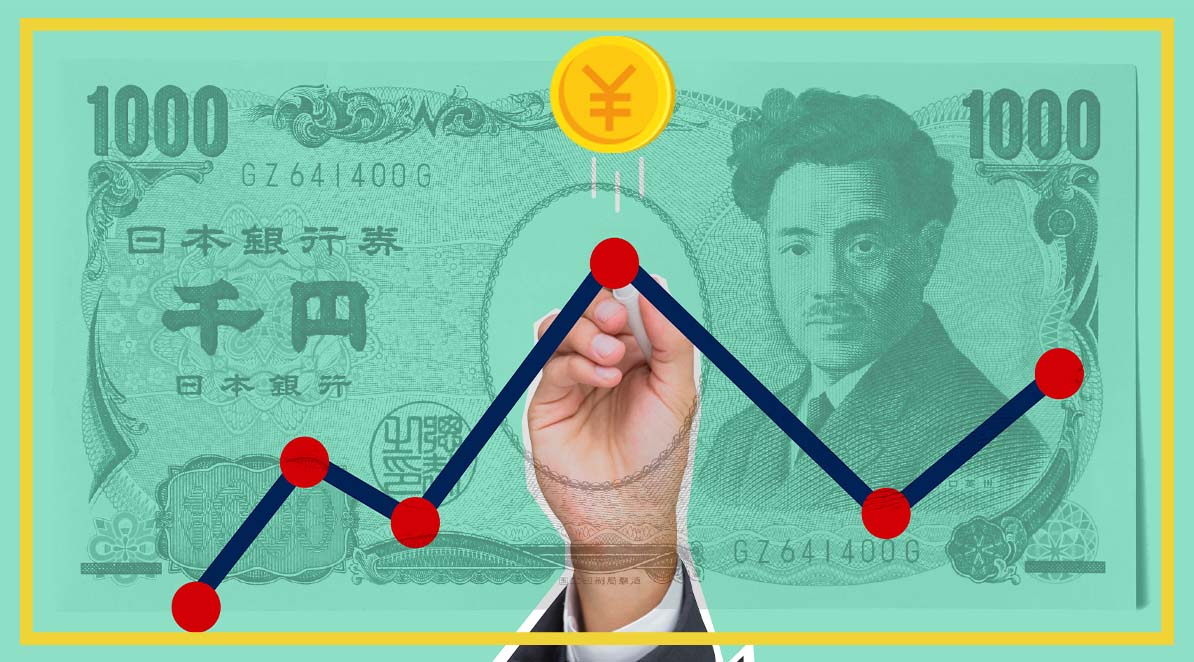The Japanese yen (JPY) has fallen by 0.4% against the US dollar (USD) in foreign exchange trading today, with the Japanese currency reaching its lowest levels for almost forty years.
The yen has now depreciated by over 12% since the start of the year alone and is one of the worst performing major currencies of 2024. One reason for this depreciation is the sluggish export numbers the Asian country has been posting, which has meant less demand for the yen. In April this year, Japanese shipments fell 3.2% year-on-year, while imports are on the rise due to increased demand in Japan for foreign crude oil, airplanes, and computers. This widening trade deficit – which stood at $38 billion in the last fiscal year – has contributed to a weaker yen.
Japanese yen falls to weakest level since 1986. pic.twitter.com/jx55r1qq7t
— Mauricio Ríos García (@riosmauricio) June 26, 2024
However, the most important factor on JPY/USD markets currently is the large interest rate differential between Japan and the US. In the States, interest rates were hiked up to 5.5% in July 2023 amidst rampant post-coronavirus inflation. They have since been maintained at that level, with the Federal Reserve increasingly sticking to its hawkish position despite widespread market expectations that they will soon start cutting rates.
The Japanese central bank made a historic pivot in April this year, when it raised rates for the first time since 2007, abandoned its long-standing commitment to keep government bond yields at close to zero, and finally ended Japan’s negative interest rate environment. The Bank of Japan also confirmed this month that it would begin scaling back its $38 billion monthly bond-buying programme as it looks to drop its ultra-loose monetary policy.
But despite this shift, the fact remains that there remains a significant gap between US rates at 5.5% and Japanese rates at 0.1%. This has incentivised foreign exchange traders to rotate assets out of Japan and into the US in order to benefit from the significantly higher yields on offer.
These dynamics have also made the yen popular for carry trades – a type of trade where investors borrow in currencies that offer low rates and buy currencies with higher yields. The market data shows that the increased use of the yen for carry trades has sent the currency down further.
Yen carry trade tempts sellers despite BOJ rate hike https://t.co/meJCIozLgl pic.twitter.com/mvq55VVEgW
— Reuters (@Reuters) March 20, 2024
A weaker yen has pushed up the cost of living in Japan by making imported goods more expensive in yen terms. One way to strengthen the yen would be to push up interest rates and close the interest rate differential with the US. However, the government and central bank are reluctant to increase borrowing costs too much as Japan is currently running a national debt of over $9 trillion and has the highest debt to GDP ratio in the world. On an individual level, too, Japan’s outstanding household debt as a percentage of disposable income rose to over 120% in 2022. Higher rates would increase these cost-of-living pressures and make it more expensive for both individuals and the government to service their debts.
All of these dynamics mean that it is little surprise that asset managers are overwhelmingly shorting the yen:
Asset Managers have built the largest Japanese Yen short position in history pic.twitter.com/oOZdhksZj8
— Barchart (@Barchart) June 25, 2024
The continued depreciation of the yen has raised speculation that the central bank could be about to intervene in markets to stem the decline, as it has done in the past. Officials in Tokyo have already started “verbal interventions,” with the Finance Minister Shunichi Suzuki saying that he is closely monitoring developments in the foreign exchange markets. Japan’s most senior official responsible for the yen, Masato Kanda, has similarly stated that authorities are ready to intervene if necessary.
While the Japanese central bank is independent, the government would likely welcome a market intervention in order to help avoid further pressures on the cost-of-living, particularly as the September election approaches. The global investment bank Citi has estimated that the authorities have accumulated up to $300 billion in ammunition to fund a campaign to prop up the yen.
Some traders are optimistic that the yen could make some gains even without central bank intervention. If US inflation data is encouraging on Friday, that could fuel hopes that the Fed will start cutting rates imminently and thereby narrow the differential with Japanese rates. The Australian investment bank Macquarie has a particularly bullish view on the yen: they believe the yen could strengthen by about 33% against the dollar within the next 18 months if the Fed starts cutting rates.
All hinges on if and when the Fed decides that it is time to start bringing interest rates down. But as long as the differential between rates in the US and Japan are so stark, the Japanese yen will continue to be trading on shaky grounds.
Author: Harry Clynch
#Japan #JPY #Yen #ForeignExchange















